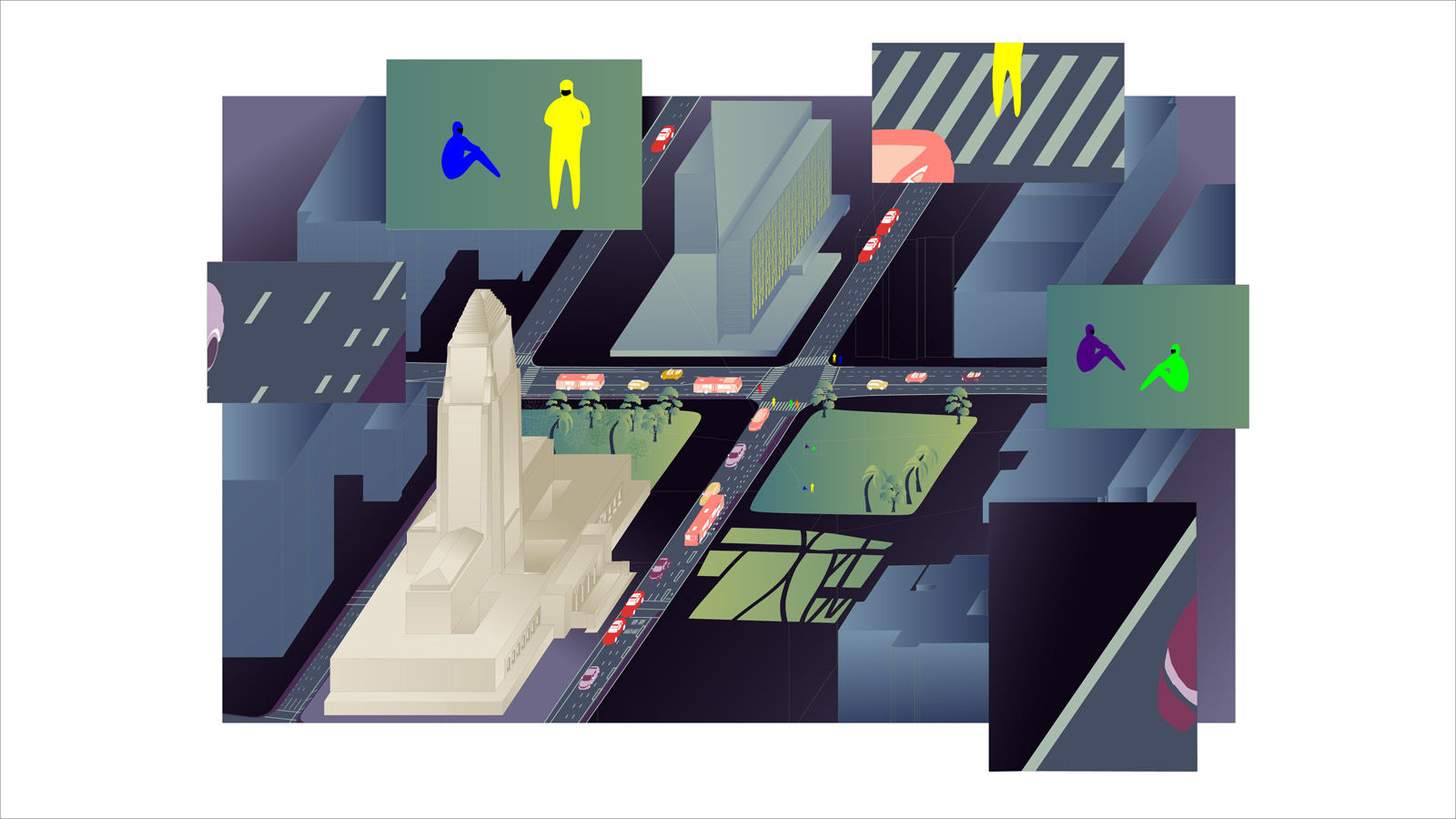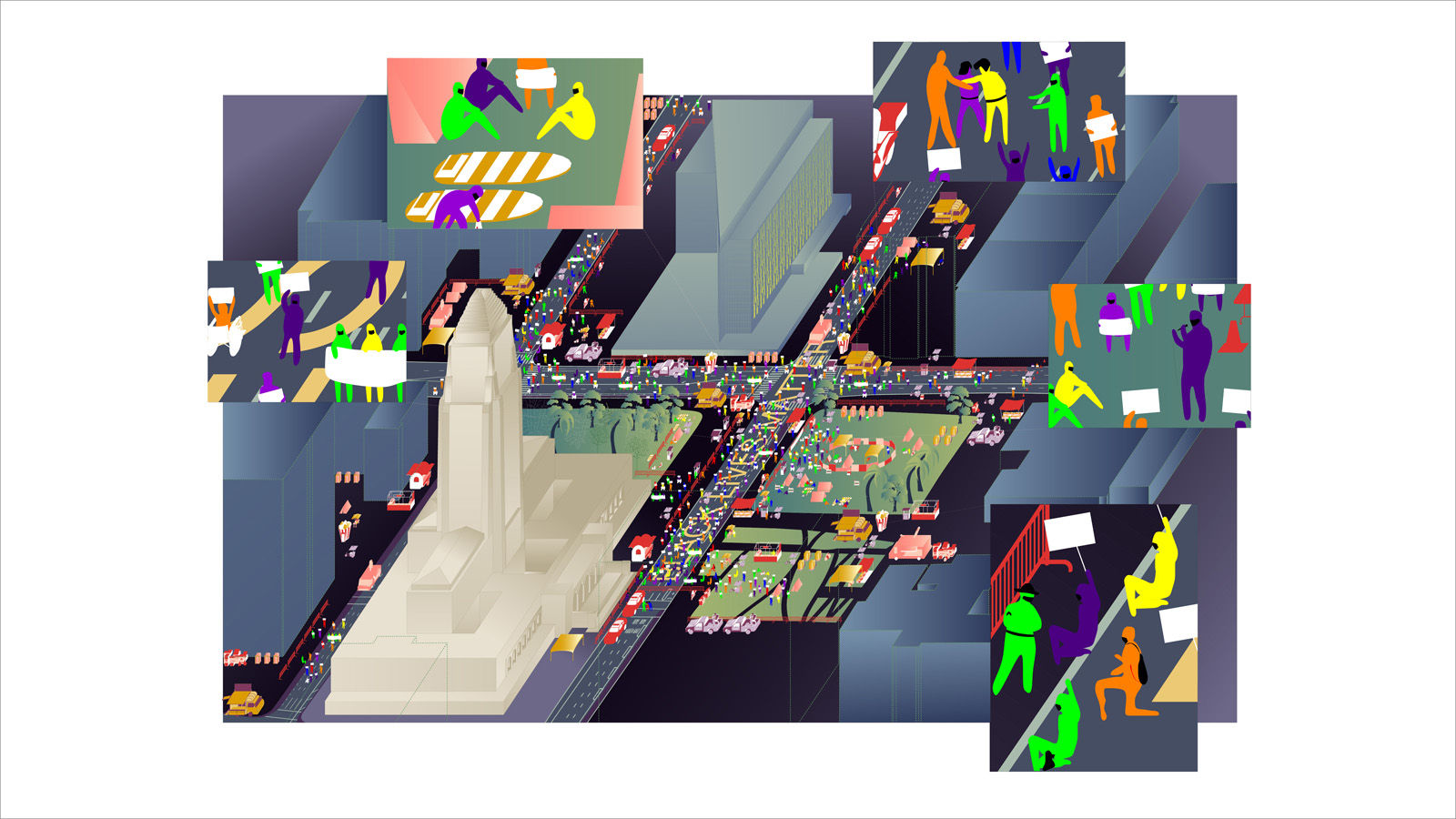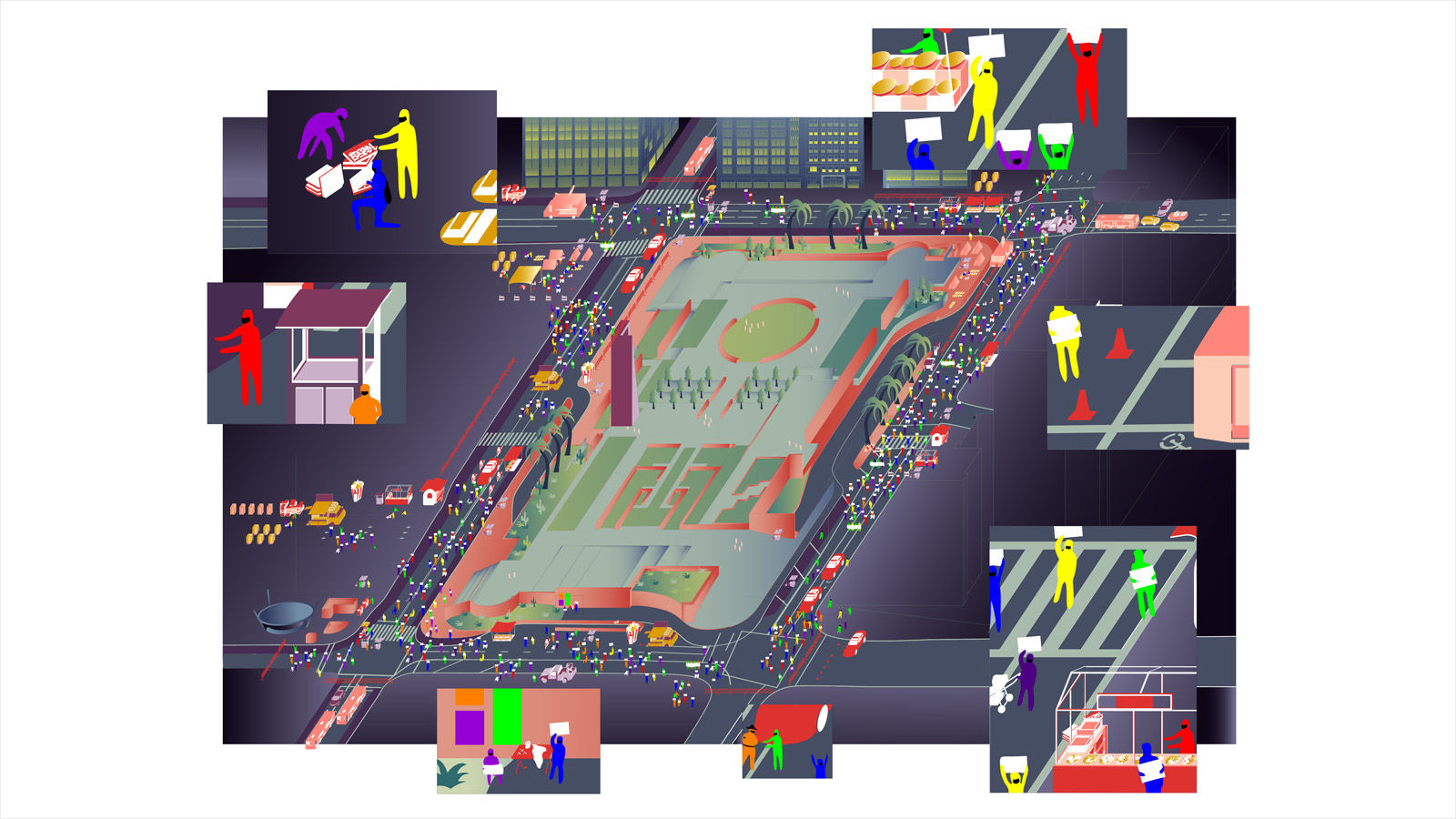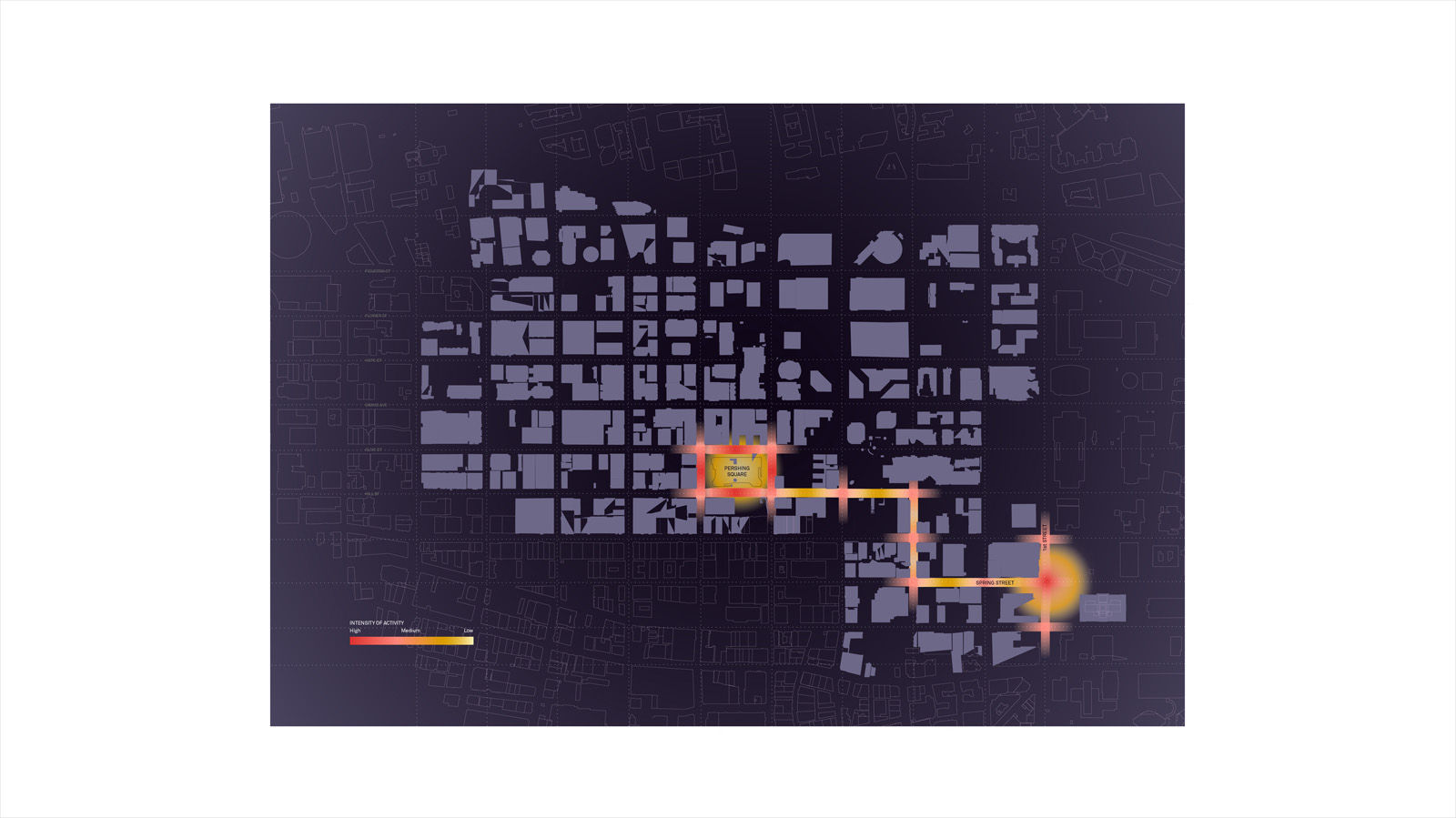The Citizen's Congregation
The spring and summer of 2020 saw massive social unrest all over the United States. In Los Angeles, the intersection between 1st and Spring is especially of political importance. Between City Hall and the LAPD Headquarters, this corner wields great significance to Los Angeles. When citizens rise and voice their opinions, they take their protests to the intended audience’s location. 1st and Spring, therefore, ceases to function as vehicular infrastructure and undergoes a functional transformation during times of unrest. Designed initially only for vehicular traffic, both 1st and Spring Streets temporarily suspend their original function for transportation and assume the new role of infrastructure for a civic congregation. Not unlike Rome’s forums, the 1st and Spring crossing becomes a political space that allows City Hall and LAPD to hear the people’s voices. Unlike the platforms or piazzas designed as spaces that anticipate citizens’ congregation, traffic engineers did not design 1st and Spring crossing as a space that doubles as a civic forum. This chapter looks at how the 1st and Spring crossing assumes the responsibility of nearby public spaces like Pershing Square.




